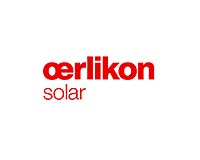 |
Valencia, Spain (UPI) May 11, 2010 Solar energy could account for up to one-quarter of the world's electricity by 2050, the International Energy Agency said Tuesday. Photovoltaic cell technology and concentrating solar power together could generate 9,000 terawatt hours of power in 2050 -- almost one-quarter of global demand. This would cut carbon emissions by almost 6 billion tons, the IEA said Tuesday upon publishing two new analyses on the solar power market. "The combination of solar PV and CSP offers considerable prospects for enhancing energy security," IEA Executive Director Nobuo Tanaka said in a statement. While PV panels directly convert the sunshine into electricity, CSP plants use the sun's rays to boil water and drive a turbine. Today, both technologies supply around 0.5 percent of the global power demand. This share needs to be increased to fight climate change and boost energy security, the IEA said, and added that politicians needed to provide support to solar power until it can compete with fossil fuel sources. "This decade is crucial for effective policies to enable the development of solar electricity," Tanaka said. "Long-term oriented, predictable solar-specific incentives are needed to sustain early deployment and bring both technologies to competitiveness in the most suitable locations and times." Germany and Spain pioneered support for solar power, with the German feed-in-tariff emulated across the world. Because of ballooning costs, Berlin and Madrid recently lowered their subsidies, sending solar shares into a downward slide. The IEA, which advises industrialized nations on energy issues, predicts that PV rooftop installations will reach grid parity not before 2020, with CSP plants producing power at competitive levels by 2020 to 2030. Deployed together, the technologies complement each other well, Tanaka said. "PV mostly for on-grid distributed generation in many regions and CSP largely providing dispatchable electricity at utility scale from regions with brightest sun and clearest skies," he said. "PV also helps provide energy access off grid in rural areas." The IEA says the largest producer of CSP will be North America, followed by North Africa and India. North Africa could export as much as 50 percent of its production to Europe, it said. Solar energy companies have high hopes for Desertec, a $550 billion initiative pushed by several major European companies. It is to power Europe's homes with green electricity generated in deserts in Africa and the Middle East. The scheme focuses on CSP and PV installations, while also integrating wind farms and biomass plants. The companies involved say Desertec could supply up to 15 percent of Europe's electricity by 2050.
Share This Article With Planet Earth
Related Links All About Solar Energy at SolarDaily.com
 Oerlikon Solar Receives New Technology Certifications For Thin Film PV
Oerlikon Solar Receives New Technology Certifications For Thin Film PVTrubbach, Switzerland (SPX) May 10, 2010 Oerlikon Solar, a leading provider of thin film photovoltaics (PV) manufacturing equipment, has received several key technology certifications that will help its customers bring thin film PV to market even more quickly. Oerlikon Solar has received a UL Master Certificate for solar PV, and an expanded T�V Rheinland IEC certification for a new 130 Watt-peak (Wp) highly efficient module design. ... read more |
|
| The content herein, unless otherwise known to be public domain, are Copyright 1995-2010 - SpaceDaily. AFP and UPI Wire Stories are copyright Agence France-Presse and United Press International. ESA Portal Reports are copyright European Space Agency. All NASA sourced material is public domain. Additional copyrights may apply in whole or part to other bona fide parties. Advertising does not imply endorsement,agreement or approval of any opinions, statements or information provided by SpaceDaily on any Web page published or hosted by SpaceDaily. Privacy Statement |